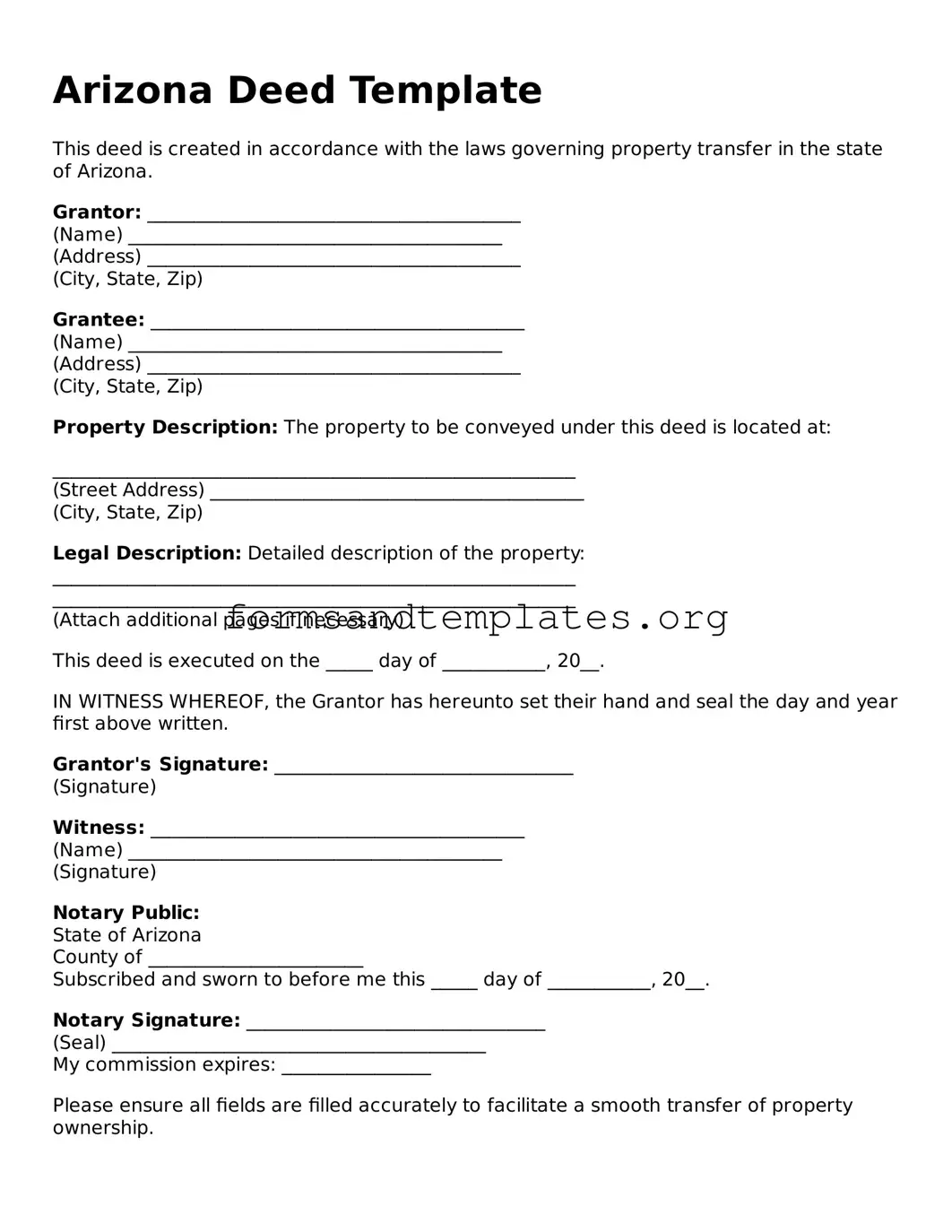Arizona Deed Template
This deed is created in accordance with the laws governing property transfer in the state of Arizona.
Grantor: ________________________________________
(Name) ________________________________________
(Address) ________________________________________
(City, State, Zip)
Grantee: ________________________________________
(Name) ________________________________________
(Address) ________________________________________
(City, State, Zip)
Property Description: The property to be conveyed under this deed is located at:
________________________________________________________
(Street Address) ________________________________________
(City, State, Zip)
Legal Description: Detailed description of the property:
________________________________________________________
________________________________________________________
(Attach additional pages if necessary)
This deed is executed on the _____ day of ___________, 20__.
IN WITNESS WHEREOF, the Grantor has hereunto set their hand and seal the day and year first above written.
Grantor's Signature: ________________________________
(Signature)
Witness: ________________________________________
(Name) ________________________________________
(Signature)
Notary Public:
State of Arizona
County of _______________________
Subscribed and sworn to before me this _____ day of ___________, 20__.
Notary Signature: ________________________________
(Seal) ________________________________________
My commission expires: ________________
Please ensure all fields are filled accurately to facilitate a smooth transfer of property ownership.
